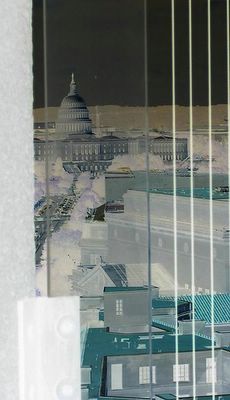LONDON: A Pre-Post-War Post-War Reconstruction Plan for the City

I'VE BEEN EXAMINING a most fascinating preliminary report published in 1944 by the British government on the post-war reconstruction of the City of London. it was originally private and confidential, but released for publication in July 1944. So as German bombers targeted the City of London -- note Big-C City, not little-c city ... as in the heart of the financial capital, near St. Pauls and adjacent to the Tower of London -- planners were already planning for the post-war reconstruction.
 The City had already been largely destroyed in the Great Fire of 1666 and despite a plan by Christopher Wren that would have imposed a new street plan, the City was rebuilt largely along the same meandering, helter-skelter medieval non-pattern. Enter the 19th century: Railway companies brought trains into the heart of the capital. Traffic increased. Congestion built. And post-war rebuilding provided an awful nice excuse to acquire property to widen streets, build new ones, open up land around historic properties (like St. Pauls).
The City had already been largely destroyed in the Great Fire of 1666 and despite a plan by Christopher Wren that would have imposed a new street plan, the City was rebuilt largely along the same meandering, helter-skelter medieval non-pattern. Enter the 19th century: Railway companies brought trains into the heart of the capital. Traffic increased. Congestion built. And post-war rebuilding provided an awful nice excuse to acquire property to widen streets, build new ones, open up land around historic properties (like St. Pauls).Anyhow, it's been great to examine the the full-color pull-out maps that include land surveys of the City from before the war (1936) and during the war (1943) where a large swath of the City was colored in orange for "Opportunities and Considerations" for redevelopment. (Orange is also a color that could be associated with Blitz fires!)
For those familiar with the City, Upper Thames Street (mapped below) and Lower Thames Street, which is your quickest best driving between the Tower and Blackfriars Bridge, was proposed at the time. A ring road that would have formed a northerly arc from Holborn Circus to Liverpool Street Station via Barbican (itself, a major post-war design landmark) was proposed but never built.
View Larger Map
Labels: 1944, Blitz, christopher wren, great fire of 1666, london, urban planning



0 Comments:
Post a Comment
<< Home